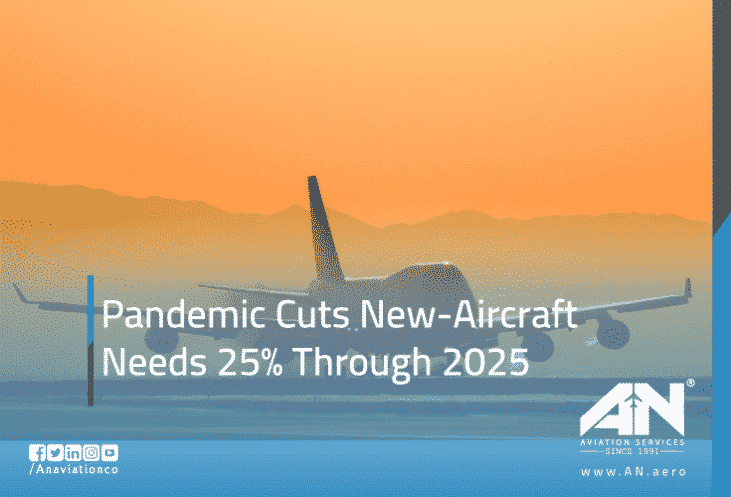
The global aviation industry has been through turbulence unlike anything it’s ever faced. The COVID-19 pandemic brought the world to a halt, leaving airports eerily quiet and fleets grounded for months. While airlines have begun their slow recovery, the long-term impacts of the pandemic are becoming increasingly clear—especially when it comes to the new aircraft needs of the aviation sector. According to recent analyses, the demand for new airplanes has dropped by 25%, reshaping the future of aircraft manufacturing in both the short term and beyond.
This article explores how the pandemic has affected the need for new planes, the ripple effects on manufacturers, and what this means for the future of aviation.
The Pandemic’s Immediate Impact on New Aircraft Needs
As international borders closed and air travel plummeted, airlines found themselves with parked fleets and empty order books. Pre-pandemic projections had been optimistic, with major manufacturers like Boeing and Airbus forecasting robust growth in fleet modernization and expansion. However, these forecasts didn’t account for the catastrophic decline in passenger demand caused by COVID-19.
The short-term result has been a dramatic reduction in new aircraft deliveries. Airlines that had once planned to grow their fleets are now focused on survival, which means deferring orders, negotiating delays with manufacturers, or even canceling contracts altogether.
This shift in priorities is particularly visible in:
- Long-haul aircraft: With international travel still struggling to rebound, wide-body jets, often used for global routes, are no longer in high demand.
- Fleet consolidation: Airlines are opting to streamline their operations by retiring older aircraft instead of replacing them with new models.
Why Are New Aircraft Needs Down by 25%?
The reduction in demand for new planes isn’t just about lower passenger numbers; several key factors are contributing to the 25% cut:
1. Passenger Demand Recovery is Slow:
Even though domestic travel has shown signs of recovery, international air travel remains far below pre-pandemic levels. The uncertainty surrounding future travel restrictions and vaccination requirements has left airlines cautious about investing in fleet expansion.
2. Financial Constraints:
Airlines have faced severe financial losses over the past two years, making capital-intensive purchases like new aircraft less feasible. Instead, many carriers are focusing on cutting costs and rebuilding cash reserves.
3. Surplus Aircraft Availability:
With a significant number of planes grounded during the pandemic, airlines now have access to surplus aircraft that can meet operational needs without investing in new purchases. These planes are either taken out of storage or leased at reduced rates.
4. Shift to Fuel Efficiency:
While the pandemic slowed the purchase of new planes, it has also accelerated the push toward fuel efficiency. Many airlines are retiring older, less fuel-efficient models and focusing on operating smaller fleets of modern aircraft. This strategy reduces the urgency to place large-scale new orders.
Impact on Aircraft Manufacturers
For major manufacturers like Boeing and Airbus, the 25% reduction in new-aircraft demand has been a wake-up call. These companies have had to adjust production rates, re-evaluate their strategies, and adapt to an industry in flux.
Boeing:
Boeing, already reeling from the 737 MAX crisis, has faced additional setbacks due to the pandemic. The company has slowed down production lines for wide-body jets like the 787 Dreamliner, reflecting the diminished demand for long-haul aircraft.
Airbus:
Airbus, too, has scaled back production rates to align with the slower recovery in aviation. The A380 program, which was already winding down pre-pandemic, now seems even more irrelevant in a world leaning toward smaller, more fuel-efficient planes.
Both companies are turning their attention toward narrow-body jets like the Boeing 737 and the Airbus A320 family, which are more in line with the needs of domestic and regional travel markets.
A New Normal for Aircraft Needs
While the pandemic has reduced the short-term need for new aircraft, it has also sparked some long-term changes in the aviation industry. Here’s how:
1. A Focus on Sustainability:
The pandemic has accelerated interest in sustainable aviation practices. Airlines are increasingly prioritizing aircraft with lower fuel consumption and emissions, which could drive demand for next-generation planes in the future.
2. Flexible Fleets:
Airlines are shifting toward flexible fleet strategies that allow them to adapt to fluctuating demand. This might involve smaller planes, more leasing options, and fewer long-term commitments.
3. Rethinking Global Routes:
With international travel taking longer to recover, airlines are rethinking their route networks and focusing on regional hubs. This shift could influence the types of planes that are in demand, favoring narrow-body jets over wide-body models.
Challenges and Opportunities Ahead
While the 25% reduction in new-aircraft demand poses significant challenges, it also presents opportunities for innovation. Manufacturers and airlines alike are re-evaluating what the future of aviation should look like. Key areas of focus include:
- Advancing technology: Developing planes that are more sustainable and cost-efficient.
- Streamlined production: Adjusting production lines to focus on smaller, in-demand aircraft.
- Exploring alternative fuels: Investing in sustainable aviation fuels and exploring hydrogen-powered planes to meet environmental goals.
Conclusion
The COVID-19 pandemic has left a lasting mark on the aviation industry, slashing the demand for new planes by 25% in the short term. However, this downturn has also opened the door to new strategies and innovations. As airlines recover, they are likely to prioritize flexibility, efficiency, and sustainability in their fleets, setting the stage for a leaner and greener future.
For now, the industry is in a holding pattern, waiting for the right conditions to take off again. But with resilience and adaptability, aviation will undoubtedly rise to meet the challenges ahead.

